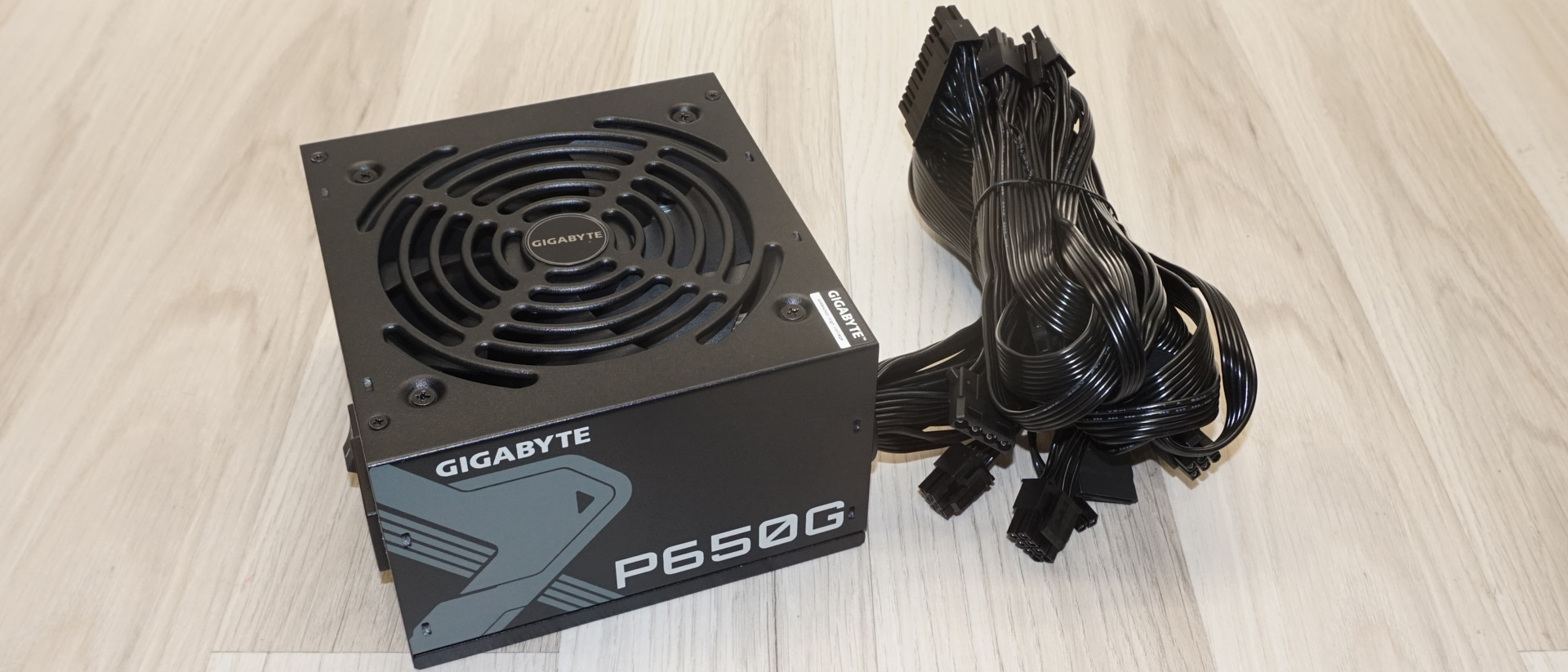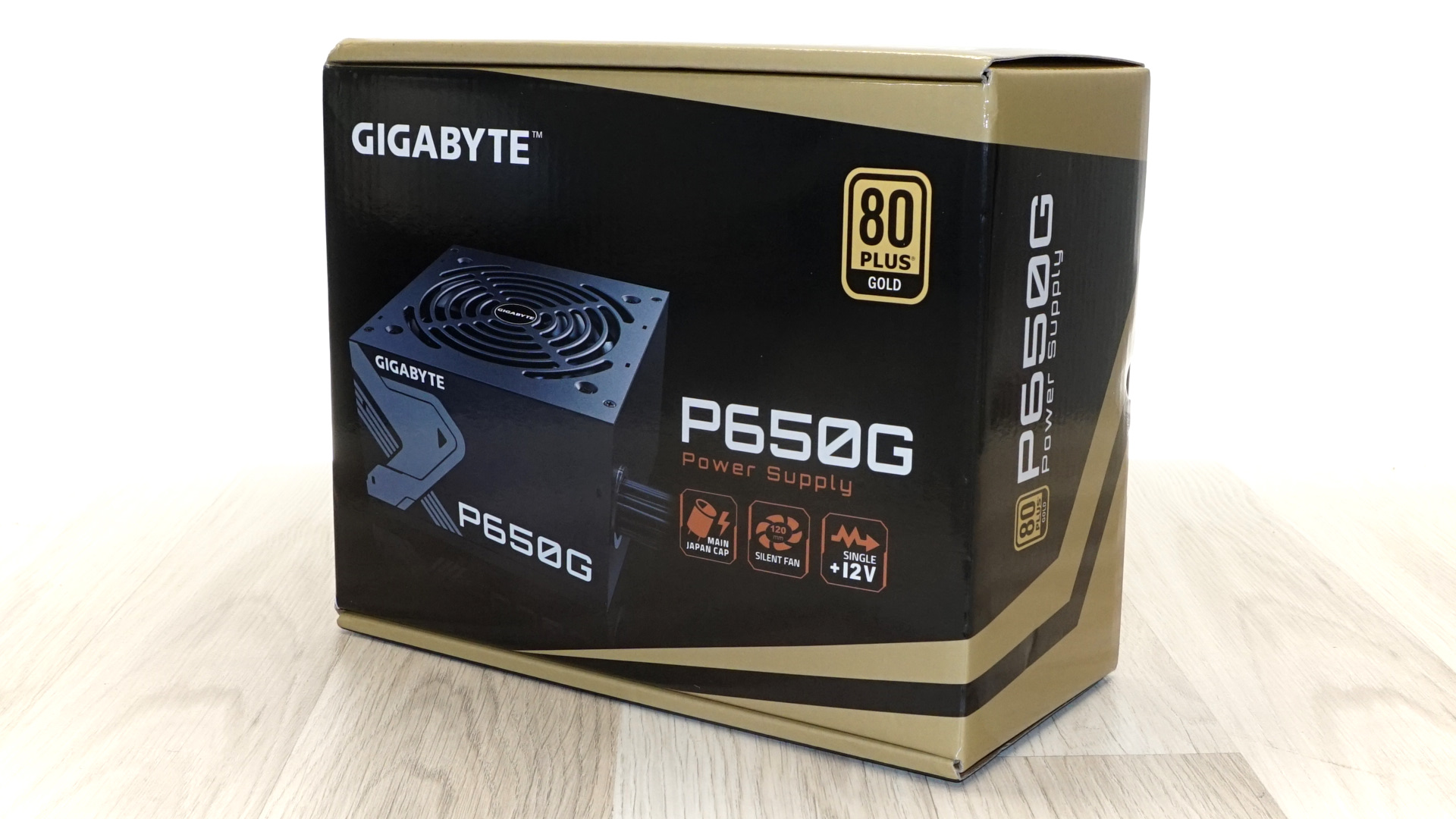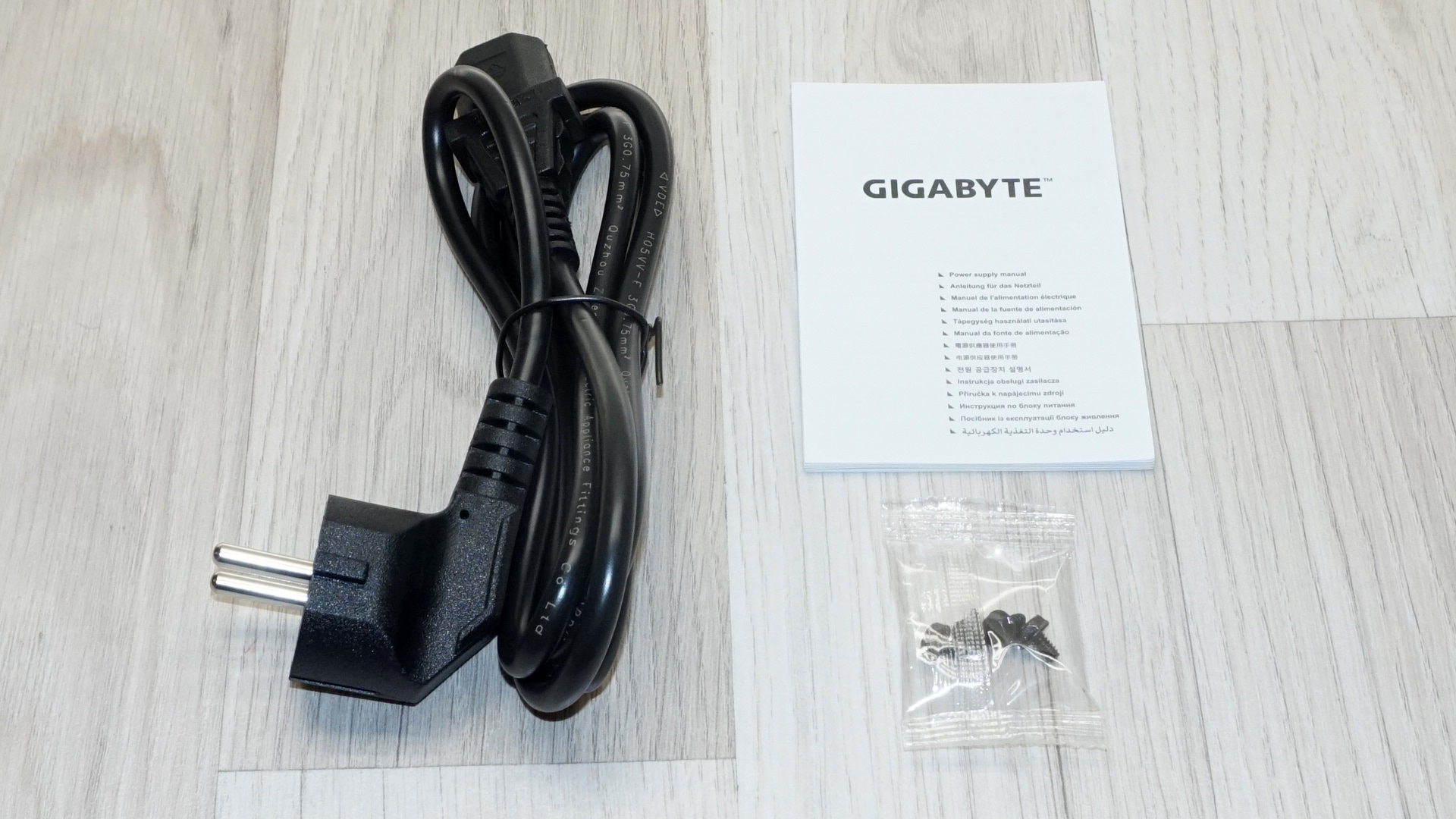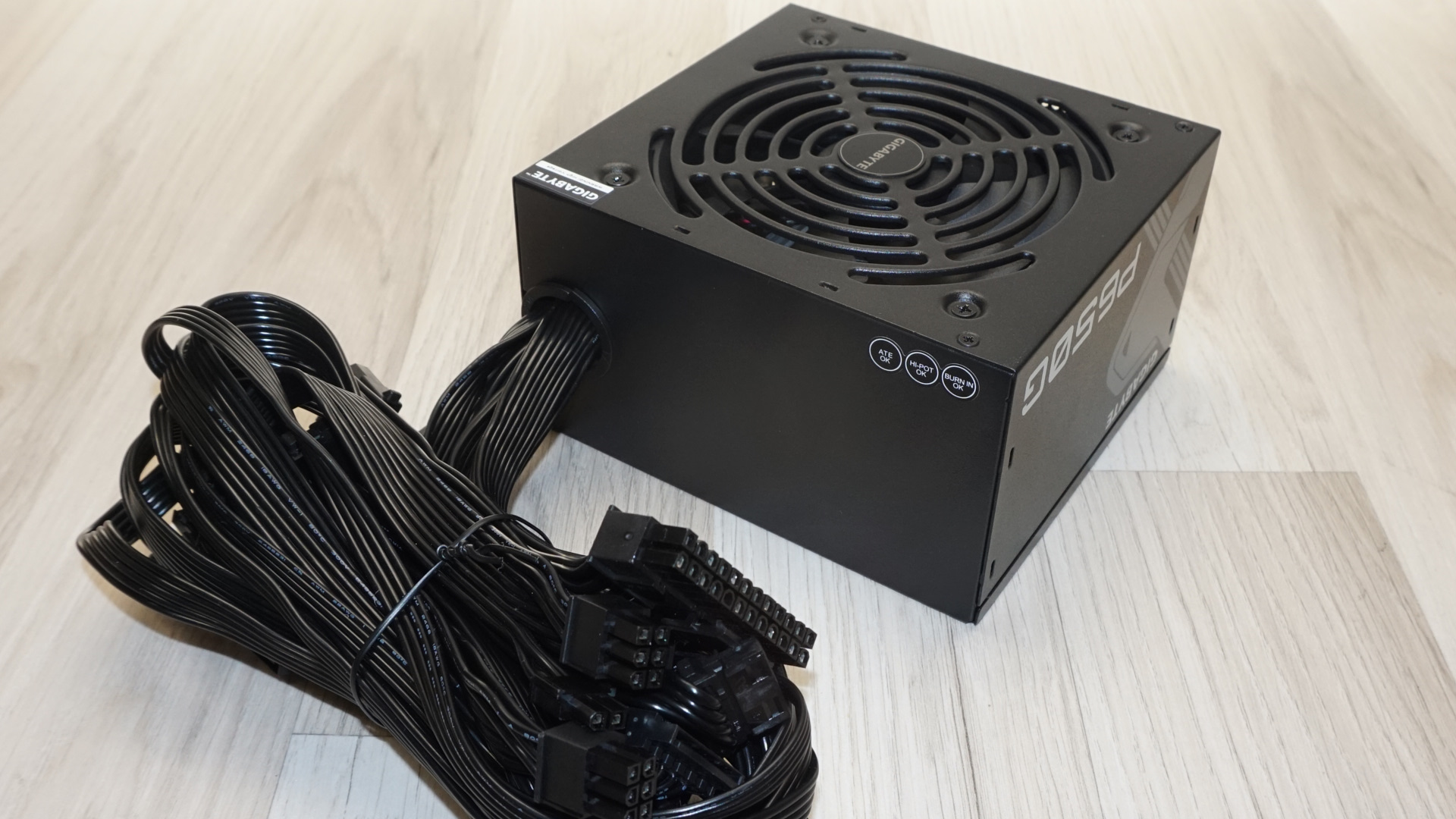Tom's Hardware Verdict
The Gigabyte P650G 650W represents honest value engineering in the mainstream power supply segment. While it successfully achieves 80 Plus Gold certification and maintains good electrical performance, this unit reveals its budget-oriented nature through basic component selection, non-modular design, and thermal limitations under extreme conditions, all for a tad too high price tag.
Pros
- +
Compact 140mm depth
- +
80 Plus Gold
- +
Solid electrical performance
- +
Five-year warranty coverage
- +
All-black cable aesthetic
- +
Good low-load efficiency
Cons
- -
Non-modular cable configuration
- -
No 12V-2x6 connector
- -
Thermal stress issues
- -
Unknown OEM platform
- -
Mixed-tier component selection
Why you can trust Tom's Hardware
Gigabyte Technology Co., Ltd. has established itself as a formidable presence in the motherboard and graphics card markets, leveraging decades of experience in component manufacturing to expand into adjacent product categories. While the Taiwan-based company built its reputation on innovative motherboard designs and robust graphics solutions, its venture into power supplies represents a strategic expansion aimed at providing complete system solutions for builders at various price points.
The P650G positions itself squarely in the competitive mainstream market, targeting budget-conscious builders who prioritize fundamental reliability over premium features. How does it stack up against our list of best power supplies? This unit adheres to the Intel ATX 12V v2.31 specification and delivers 80 Plus Gold efficiency certification, promising up to 90% efficiency under normal load conditions. At its $100 retail price point, the P650G faces intense competition from established players, making its value proposition heavily dependent on execution quality rather than feature innovation.
Specifications and Design
RAIL | +3.3V | +5V | +12V | +5Vsb | -12V |
MAX OUTPUT | 18A | 15A | 54A | 3A | 0.3A |
| Row 2 - Cell 0 | 108W | 108W | 648W | 15W | 3.6W |
TOTAL | 650W | Row 3 - Cell 2 | Row 3 - Cell 3 | Row 3 - Cell 4 | Row 3 - Cell 5 |
AC INPUT | 100 - 240 VAC, 50 - 60 Hz | Row 4 - Cell 2 | Row 4 - Cell 3 | Row 4 - Cell 4 | Row 4 - Cell 5 |
MSRP | $100 | Row 5 - Cell 2 | Row 5 - Cell 3 | Row 5 - Cell 4 | Row 5 - Cell 5 |
In the Box
The Gigabyte P650G arrives in utilitarian packaging that prioritizes protection over marketing flash. The cardboard box features a black and gold aesthetic theme that reflects the unit's positioning, with the front panel showcasing a picture of the power supply itself. Inside, foam inserts and a protective nylon pouch provide adequate protection during transport.
The included accessories take a minimalist approach, containing only the essential mounting screws and standard AC power cable. Gigabyte has not included any cable management accessories, documentation beyond basic specifications, or premium touches that might elevate the unboxing experience. This streamlined approach makes sense for a value-oriented product, though it does underscore the unit's positioning in the market hierarchy.
The power supply features completely hardwired cables throughout, a design decision that has become increasingly rare in the modern power supply landscape where modular connectivity has become the expected standard, even in budget segments. All cables employ an all-black color scheme with flat, ribbon-like construction and black connectors.
Of particular note is the complete absence of a 12V-2x6 connector, which immediately limits compatibility with modern graphics cards that require this newer power delivery standard. This represents a significant limitation for builders planning to utilize current-generation high-end graphics solutions and suggests the platform's origins predate the widespread adoption of PCIe 5.0 power requirements, as the unit’s power output is not cripplingly low for the inclusion of a reduced output 12V-2x6 connector.
Connector type | Hardwired | Modular |
|---|---|---|
ATX 24 Pin | 1 | - |
EPS 4+4 Pin | 2 | - |
EPS 8 Pin | - | - |
PCI-E 5.0 | - | - |
PCI-E 8 Pin | 4 | - |
SATA | 6 | - |
Molex | 3 | - |
Floppy | - | - |
External Appearance
Gigabyte has adopted a conservative yet professional aesthetic approach for the P650G that emphasizes functionality over visual drama. The unit receives a satin black chassis finish that provides an attractive appearance while remaining neutral enough to complement virtually any build theme. The chassis adheres precisely to the ATX standard's 140mm length specification, ensuring universal compatibility with any ATX-compliant case without clearance concerns.
Get Tom's Hardware's best news and in-depth reviews, straight to your inbox.
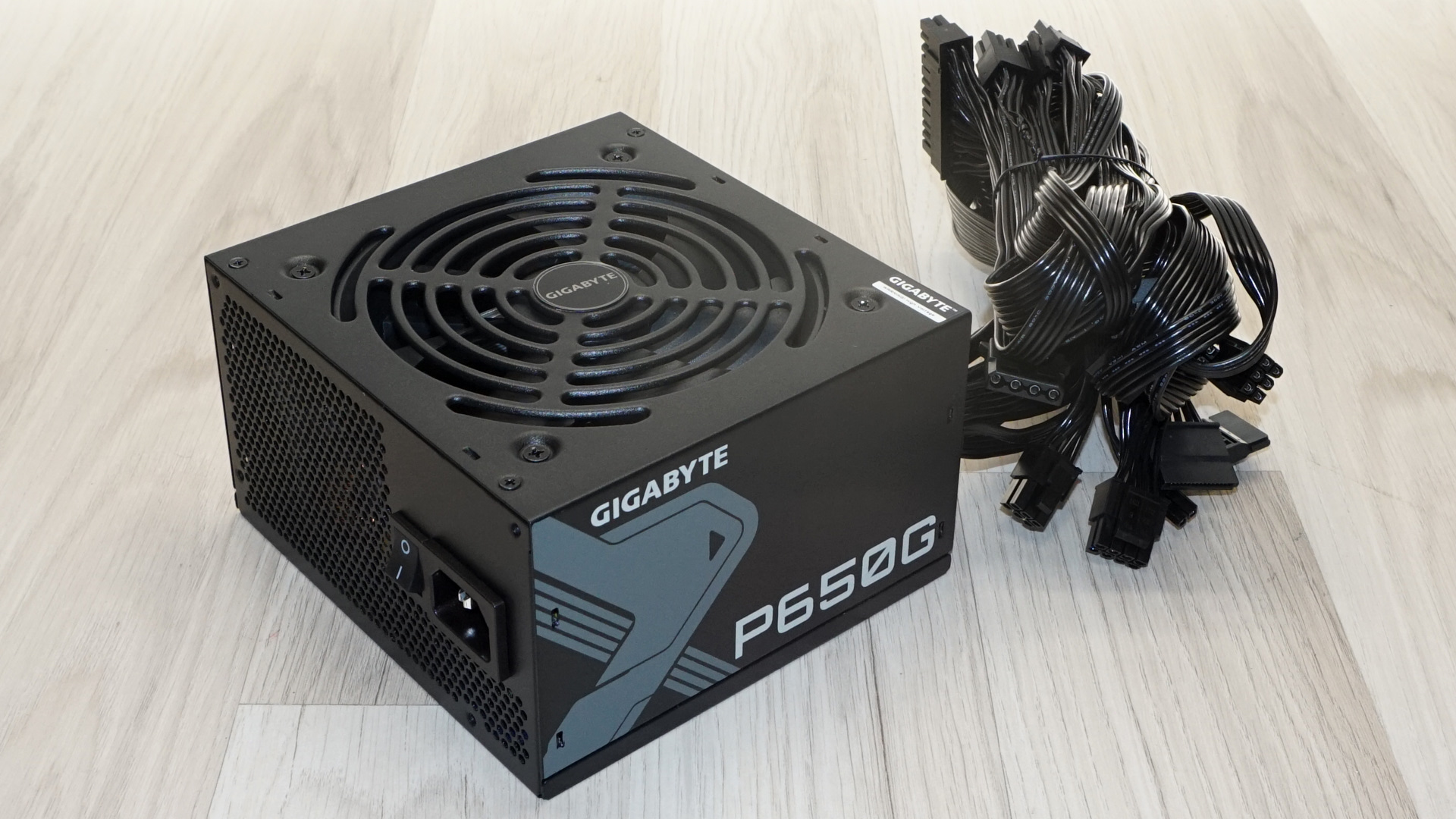
The front panel is expectedly basic, with only the standard AC power receptacle and rocker-style power switch, while the completely hardwired design results in a plain rear panel without any modular connectors. The top surface houses the electrical specifications and certification label.
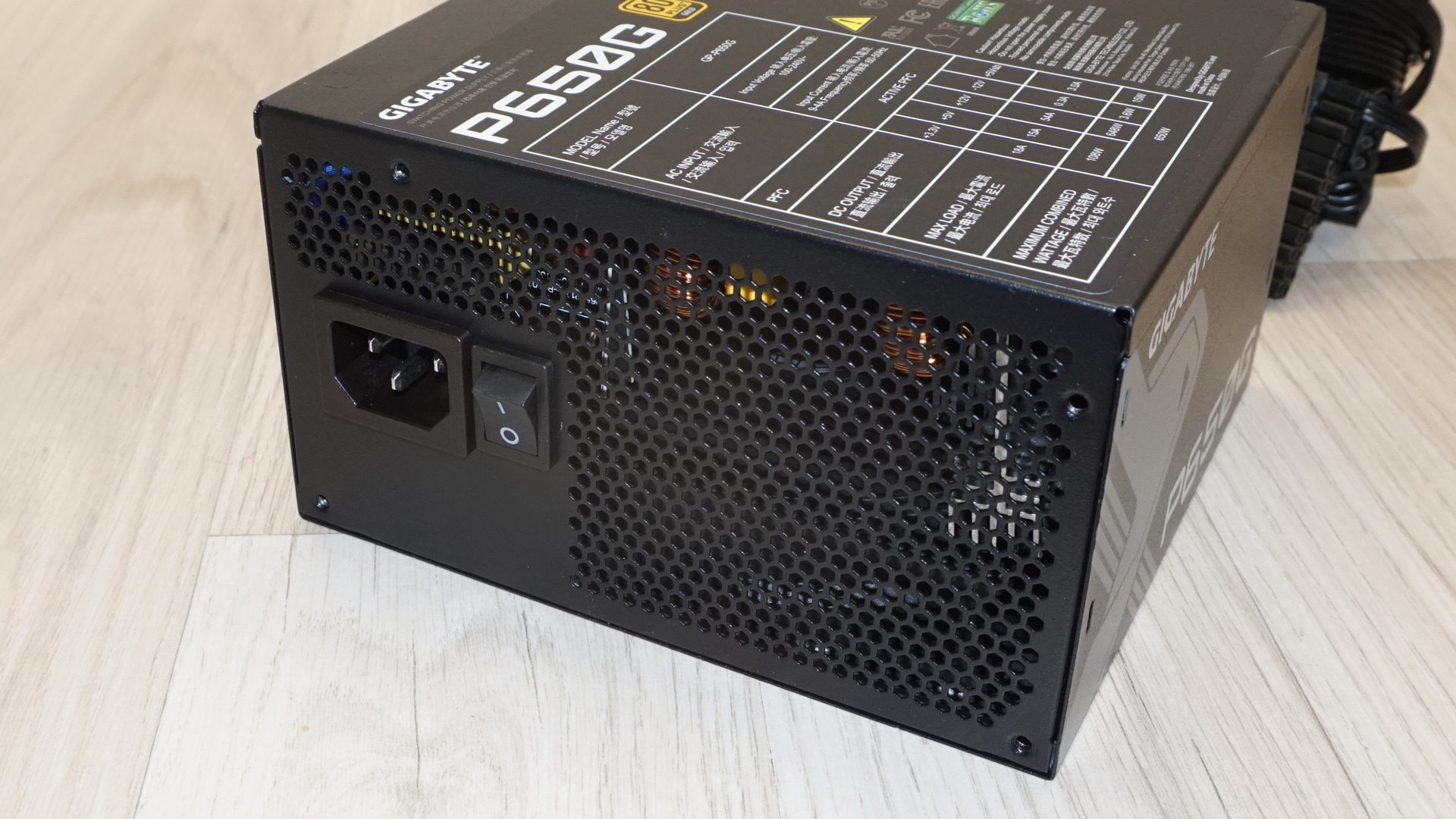
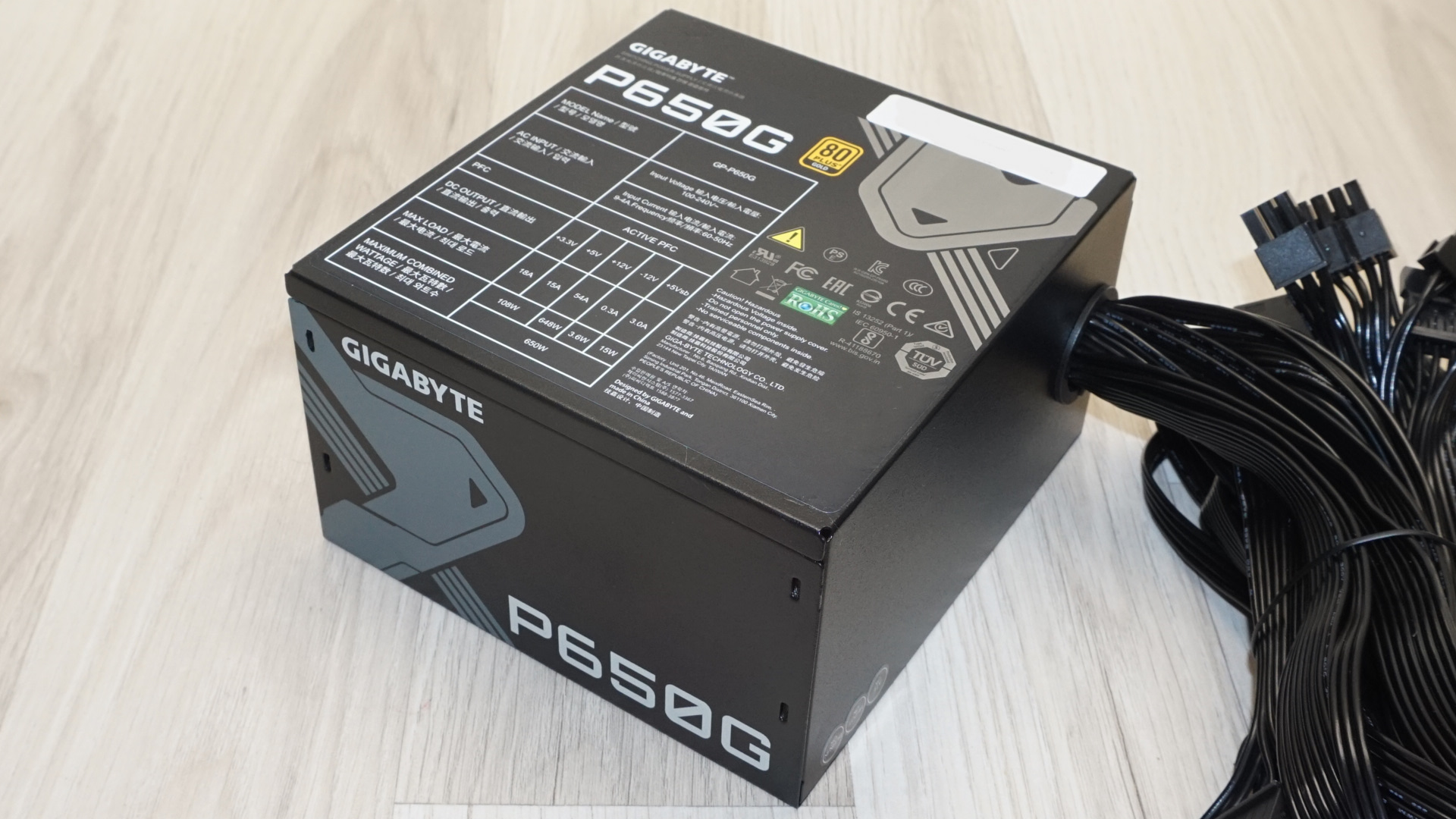
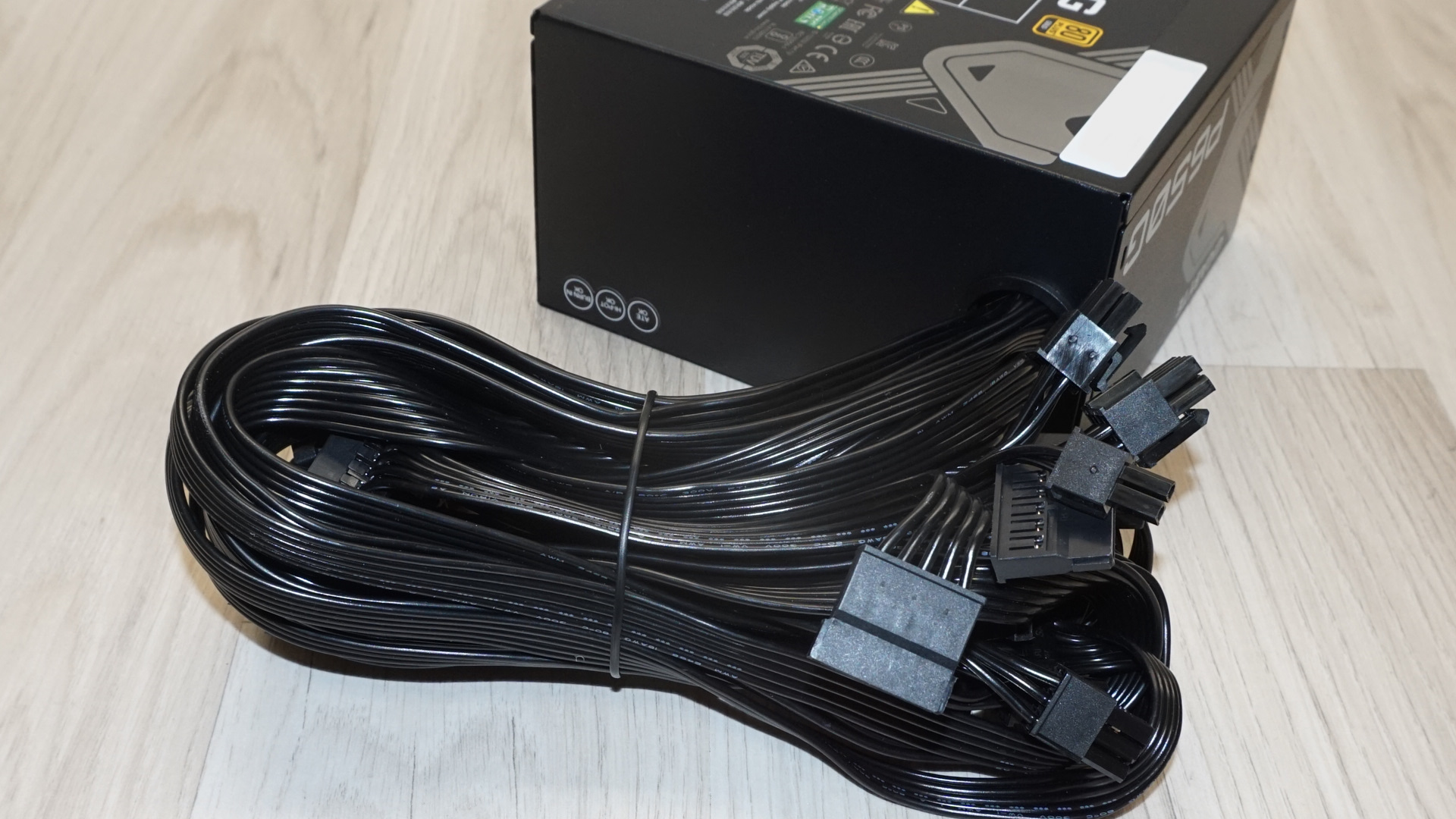
The fan guard integrates directly into the chassis design, featuring a circular vent pattern with the Gigabyte logo prominently displayed in the center. Decorative logos are painted on both sides of the unit. This approach provides both functional airflow characteristics and subtle branding that remains tasteful rather than ostentatious.
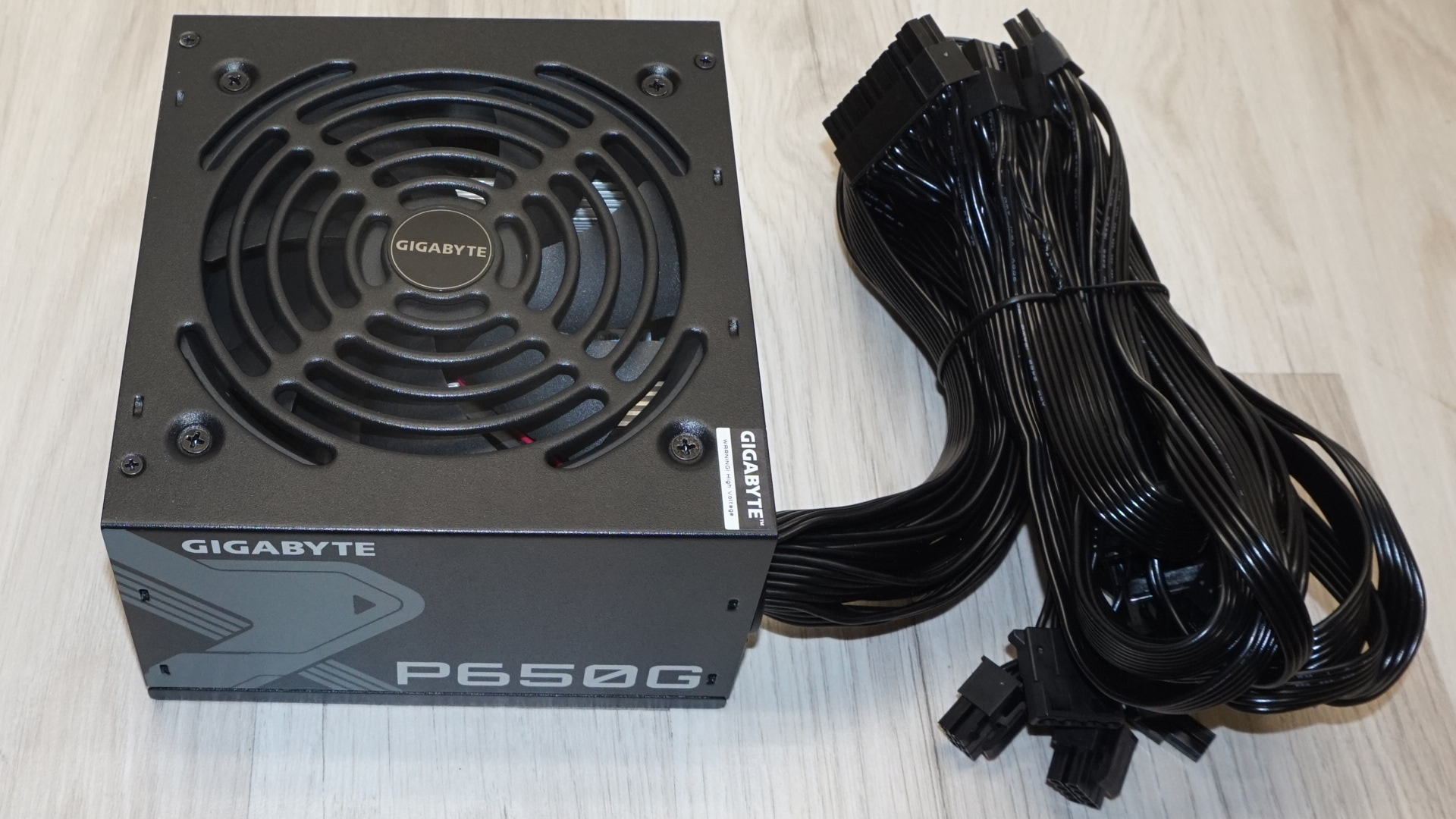
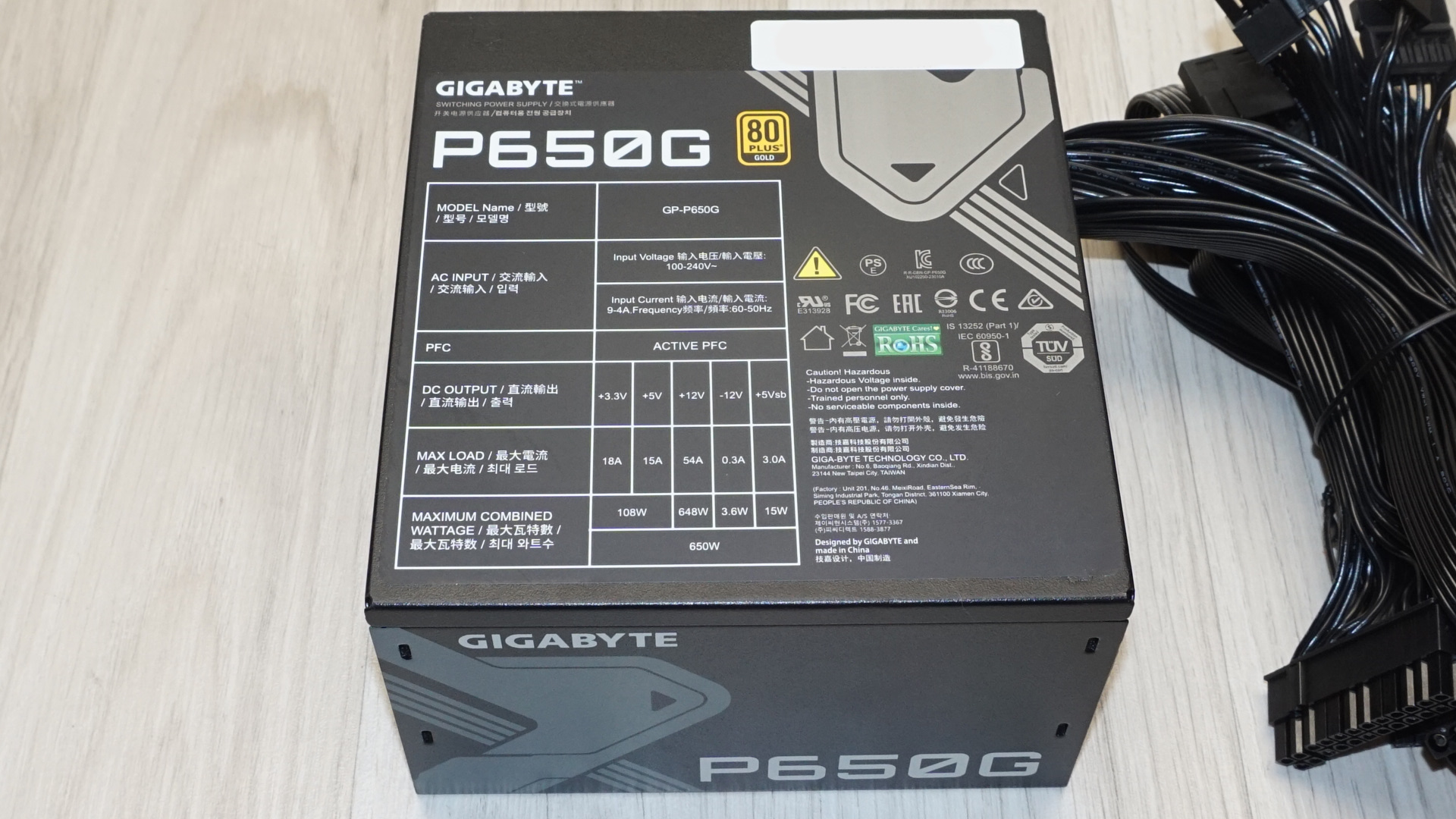
Internal Design
Cooling responsibilities fall to a Yate Loon D12SH-12 120mm fan equipped with a sleeve bearing system. Yate Loon represents an established manufacturer in the cooling industry with a proven track record for reliability, though sleeve bearings represent a cost-conscious choice that prioritizes quiet operation over ultimate longevity. While sleeve bearings operate more quietly than ball bearing alternatives, they prove more susceptible to wear under sustained high-temperature conditions and may exhibit reduced lifespan in demanding thermal environments. The fan has a relatively high maximum speed for a 650-watt unit.
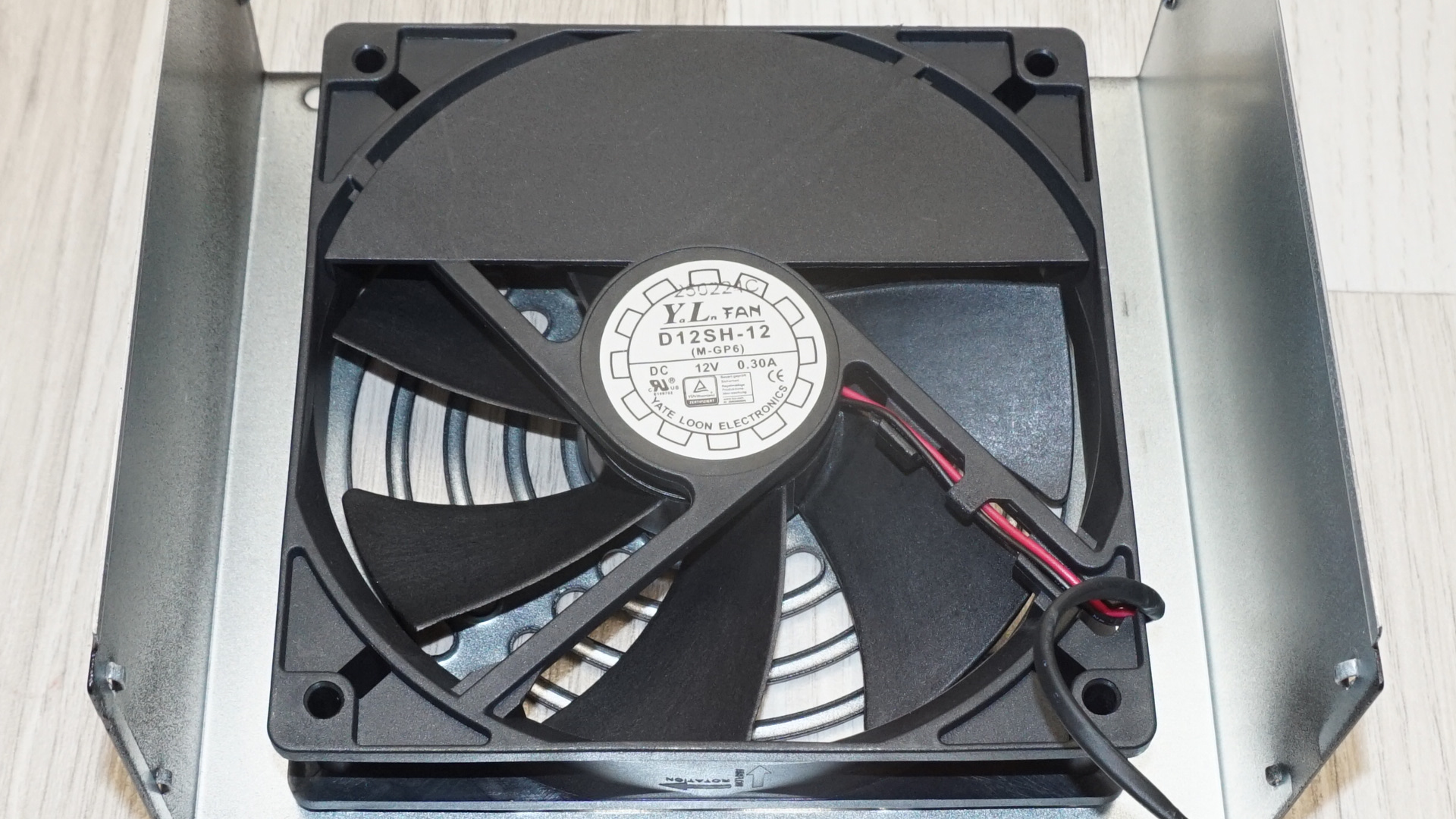
The original equipment manufacturer behind the P650G is MEIC (Xiamen Metrotec Electronic Industry Co., Ltd.), a Chinese company established in 2007. While MEIC has operated for nearly two decades, they remain among the younger participants in the power supply manufacturing field, and we had their products appear only in Gigabyte units so far.
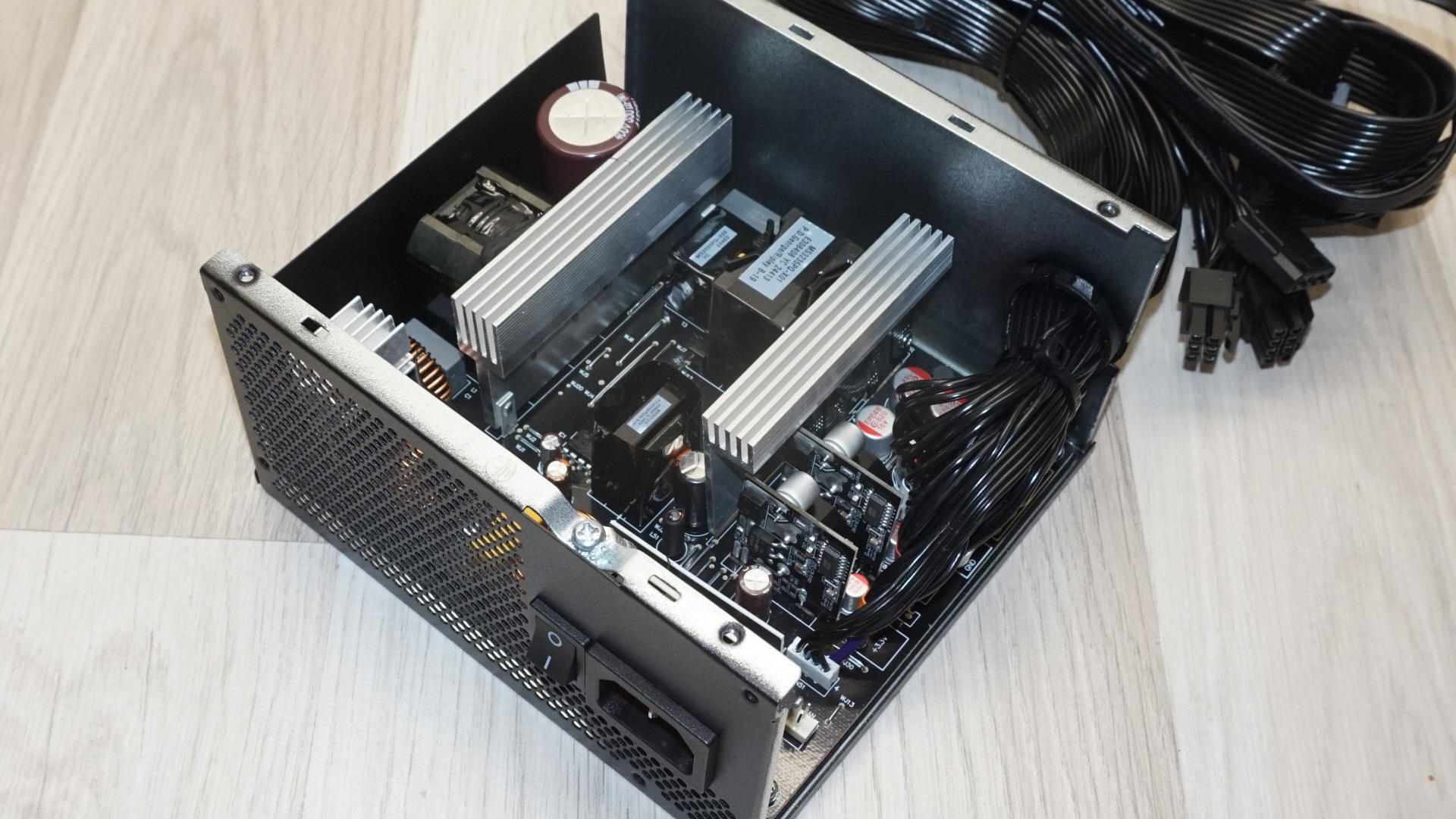
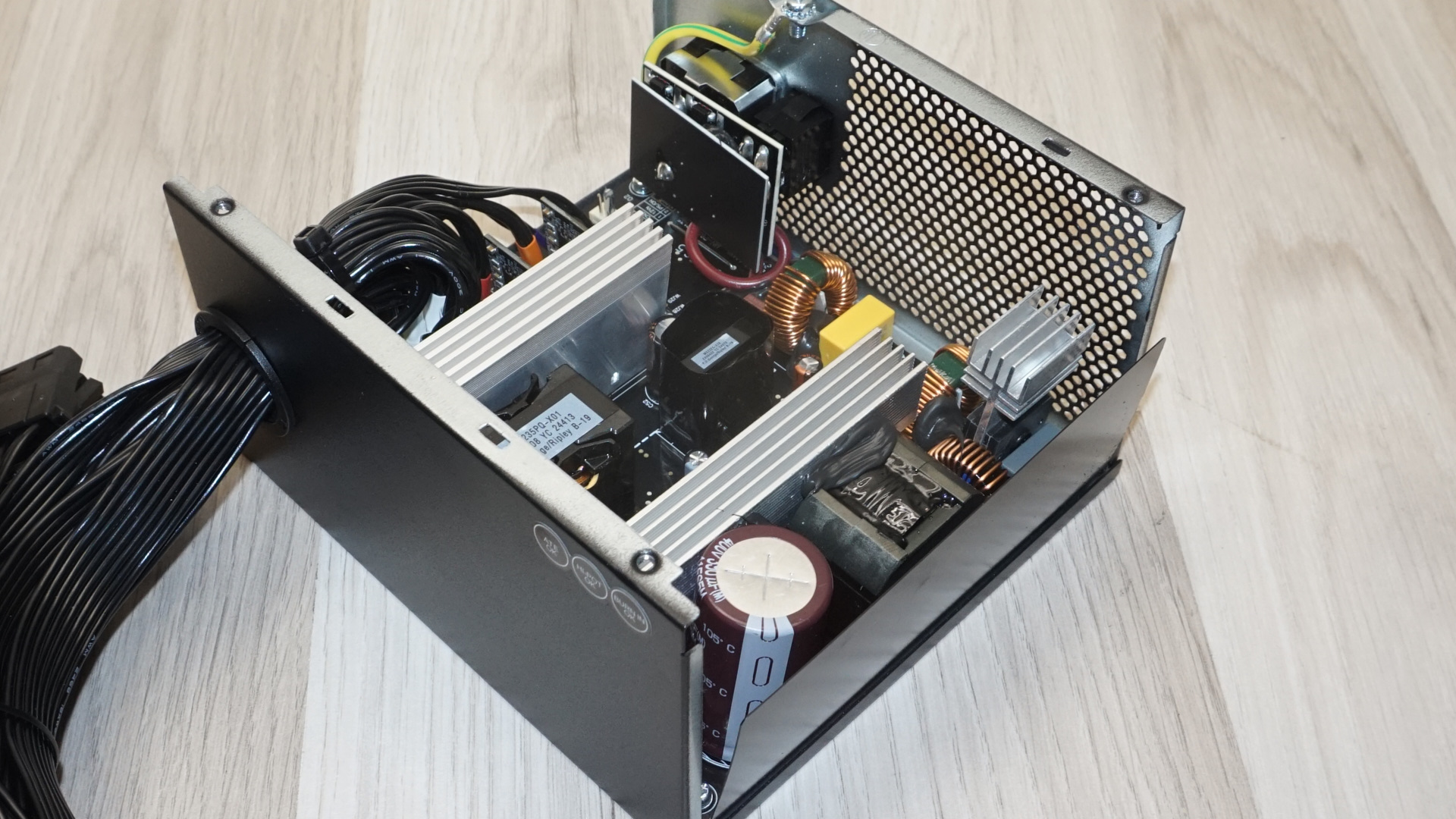
The input filtering stage implements a very basic configuration utilizing one Y capacitor, two X capacitors, and two filtering inductors. While this arrangement meets fundamental requirements for electromagnetic interference suppression, it represents a minimal approach rather than the robust filtering implementations found in premium units. Two rectifying bridges mount on a substantial shared heatsink.
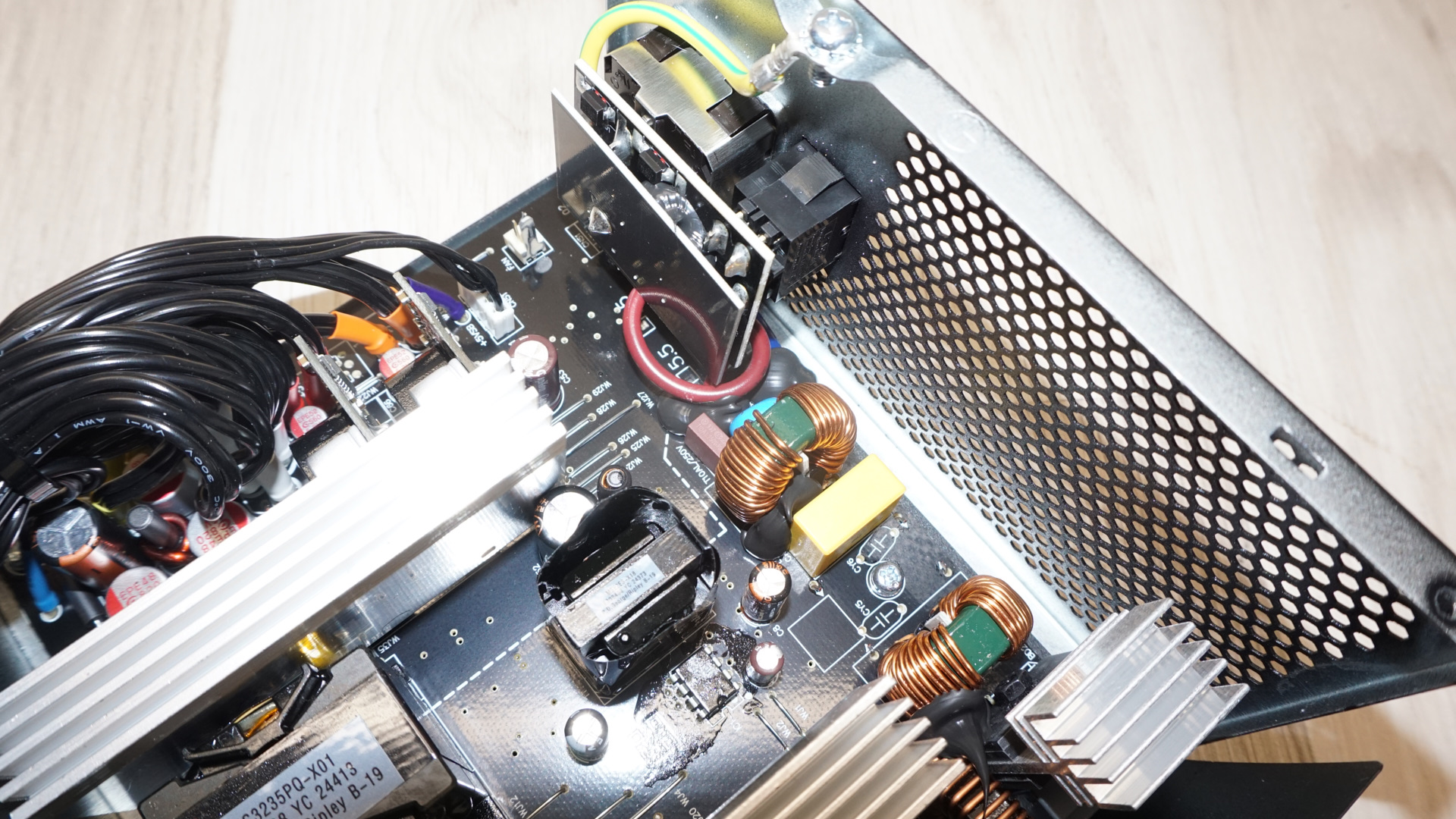
The APFC circuitry utilizes two PWE180N65SFMF MOSFETs from PingWei alongside a single diode, paired with an encased inductor and a Nippon Chemi-Con 390 μF capacitor. The primary inversion stage employs two JILIN SINO-MICROELECTRONICS JCS18N50FH MOSFETs in a half-bridge topology configuration, all mounted on the same heatsink as the APFC components.
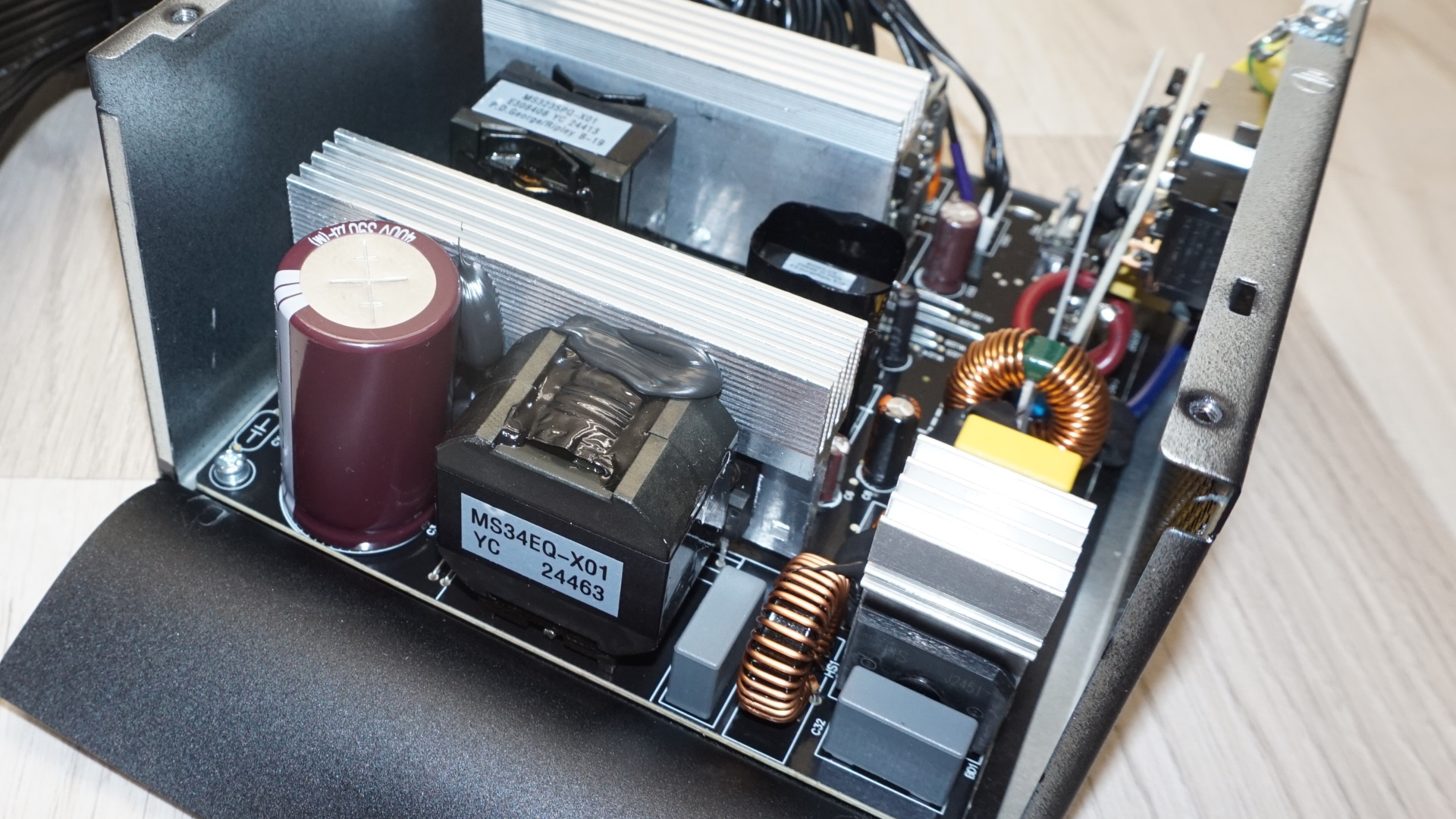
The secondary side implementation utilizes a vertical PCB configuration with synchronous rectification handling primary 12V rail generation, while separate DC-to-DC circuits on other vertical daughterboards manage the 3.3V and 5V secondary rails. The secondary side capacitors represent a mixed selection including Nippon Chemi-Con, Lelon, and APAQ solid-state units, reflecting the varied component sourcing typical of budget-oriented designs.
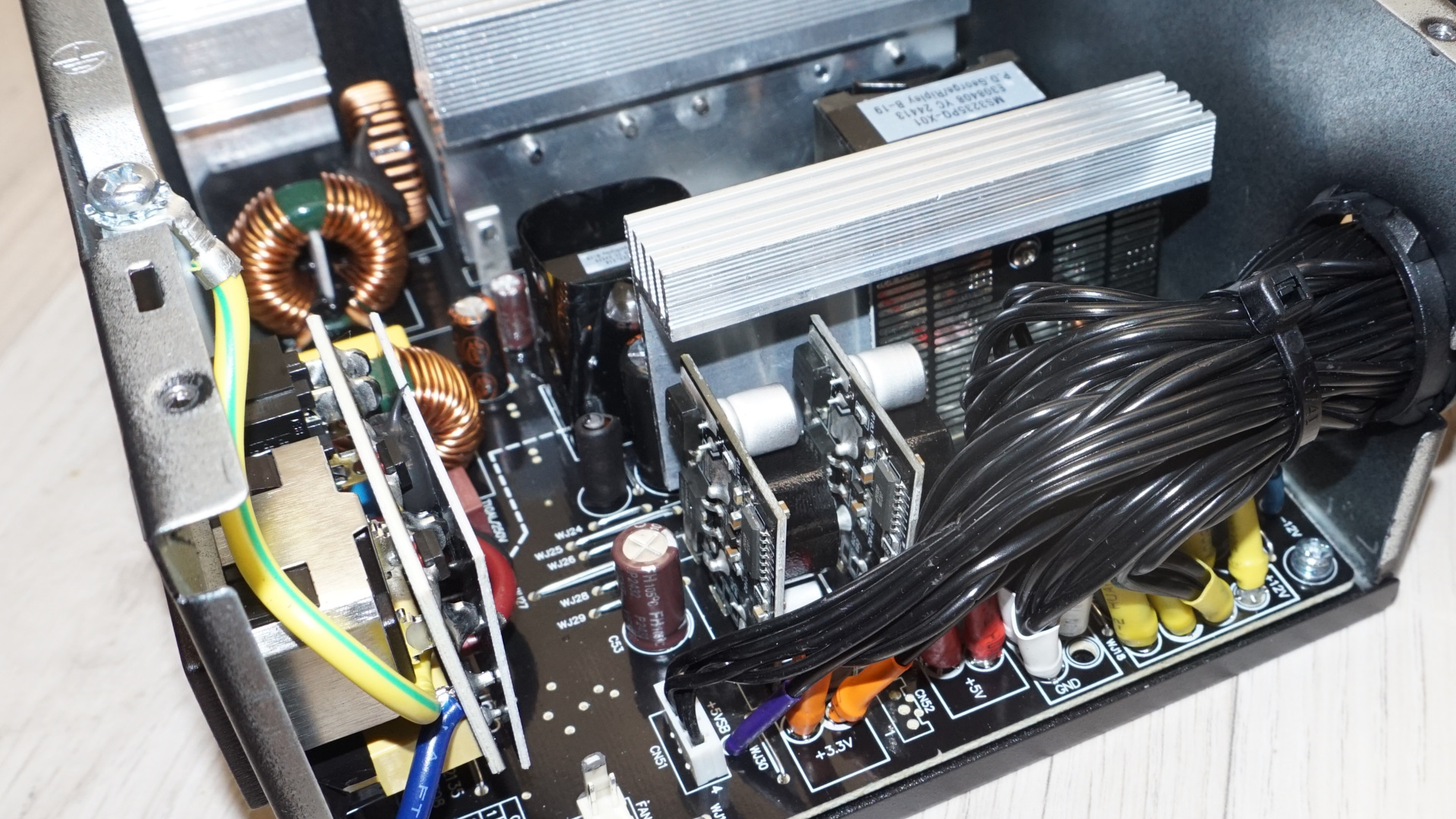
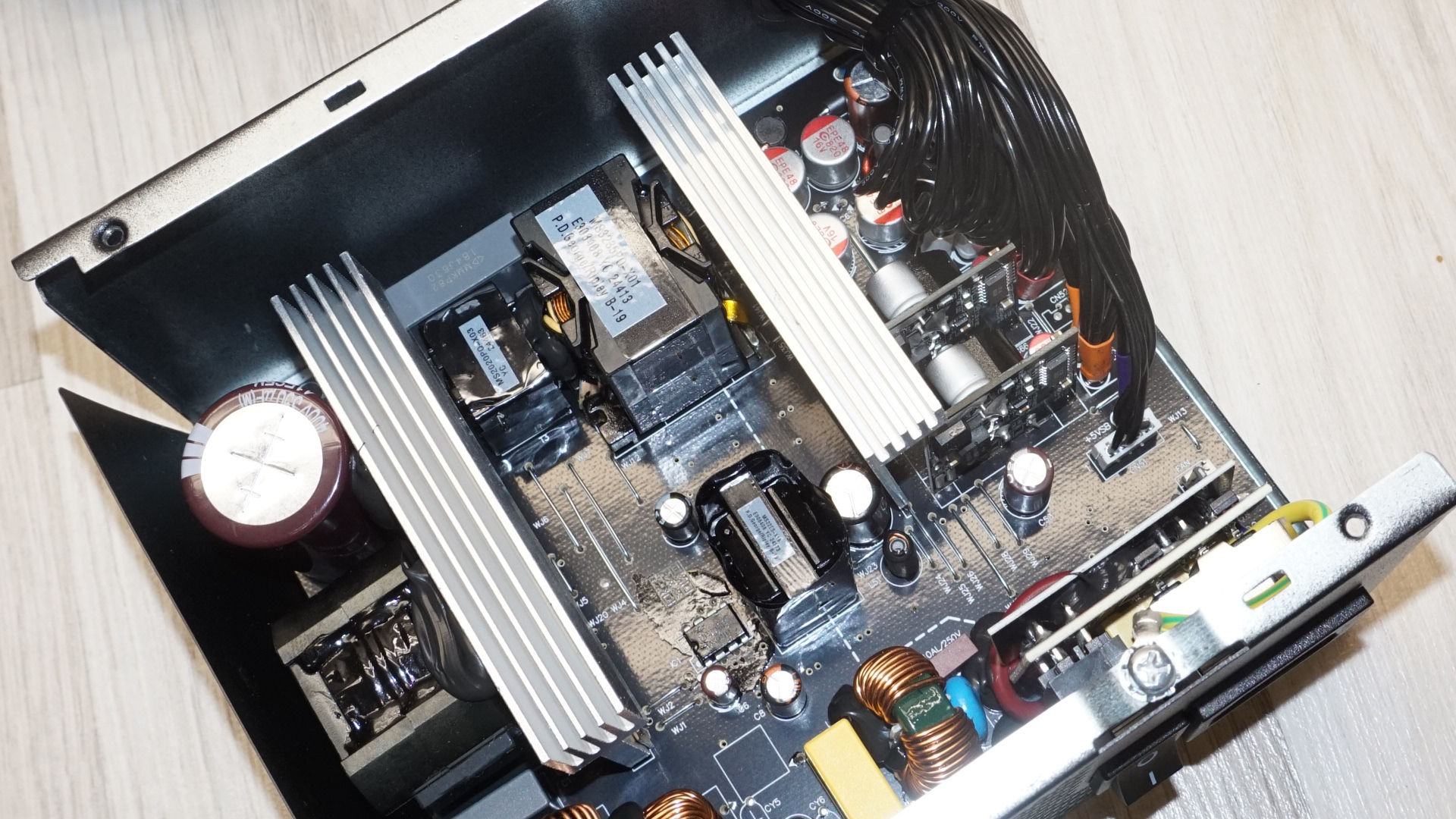
Cold Test Results
Cold Test Results (25°C Ambient)
For the testing of PSUs, we are using high precision electronic loads with a maximum power draw of 2700 Watts, a Rigol DS5042M 40 MHz oscilloscope, an Extech 380803 power analyzer, two high precision UNI-T UT-325 digital thermometers, an Extech HD600 SPL meter, a self-designed hotbox and various other bits and parts.
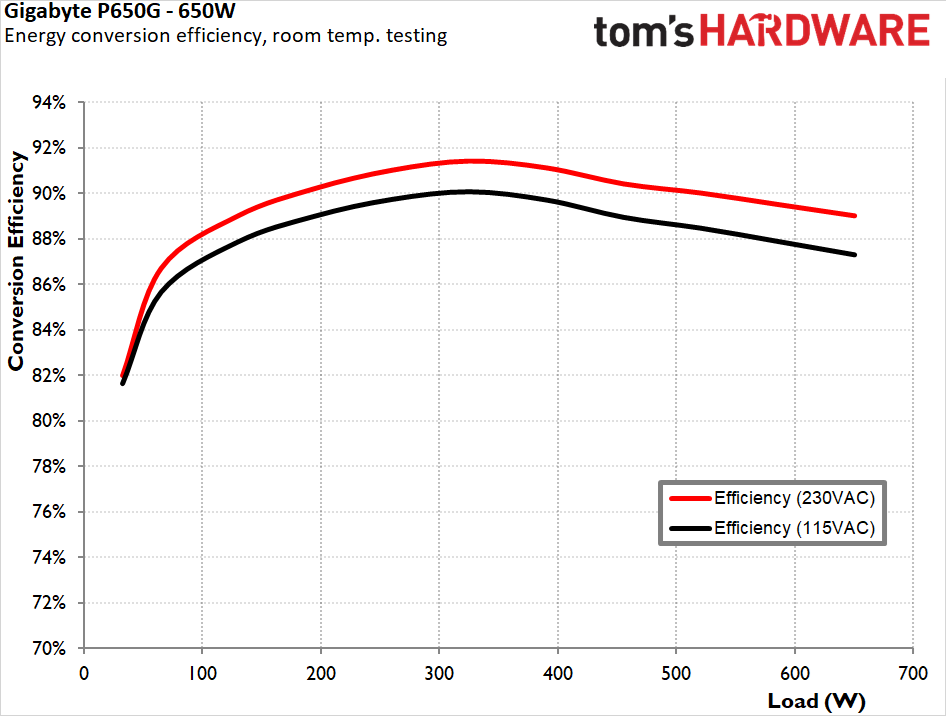
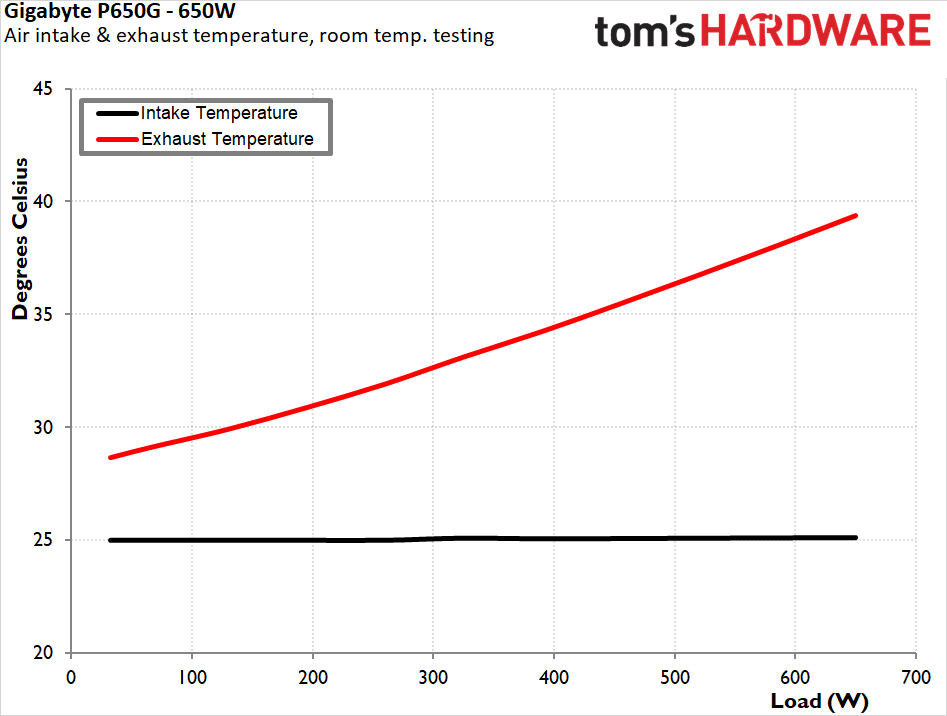
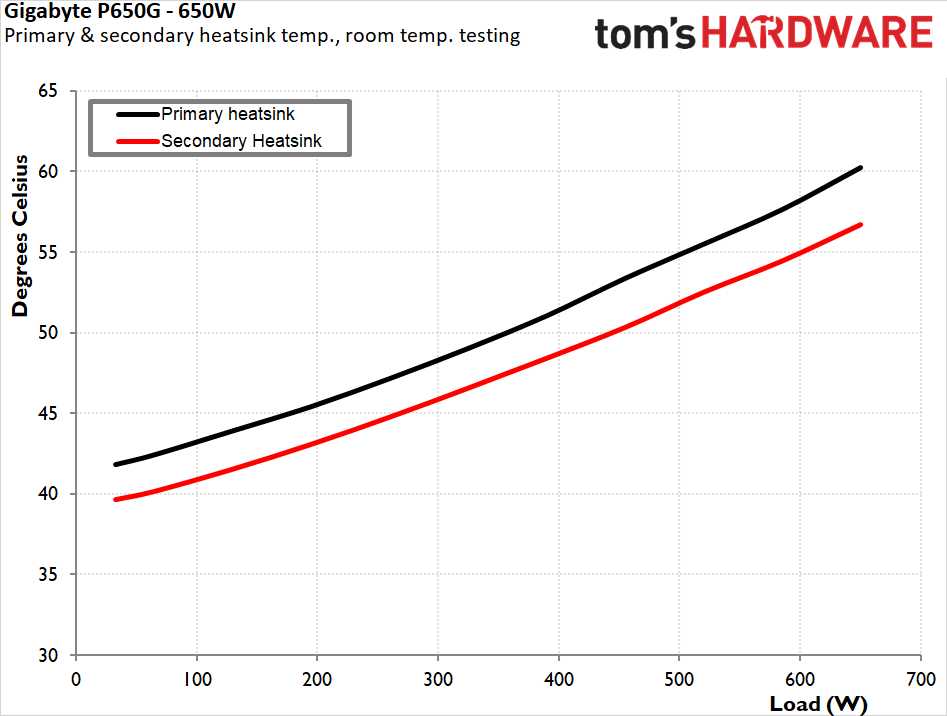
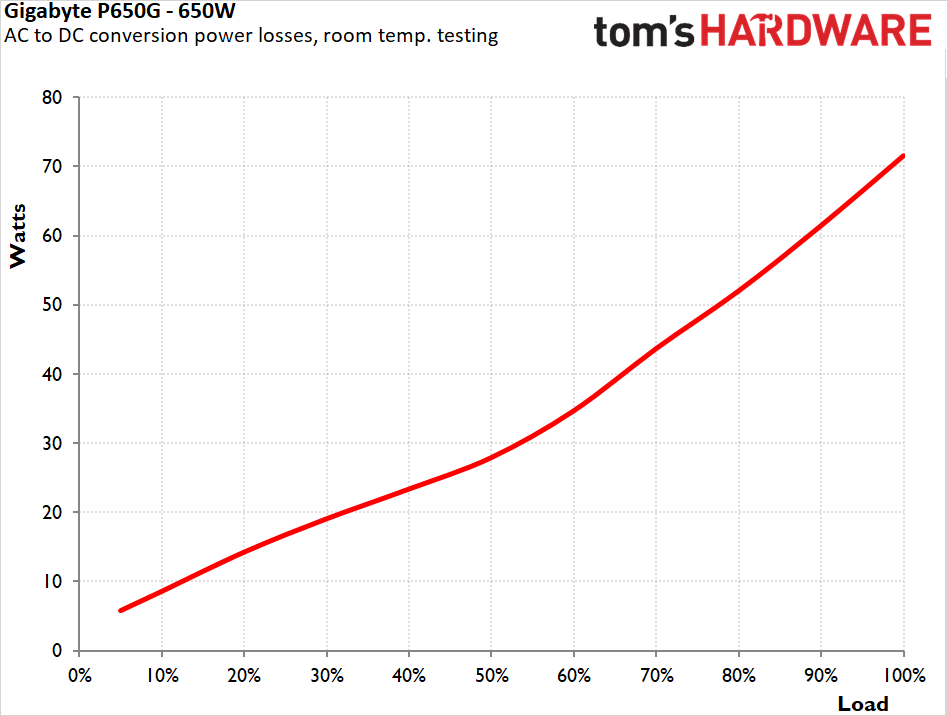
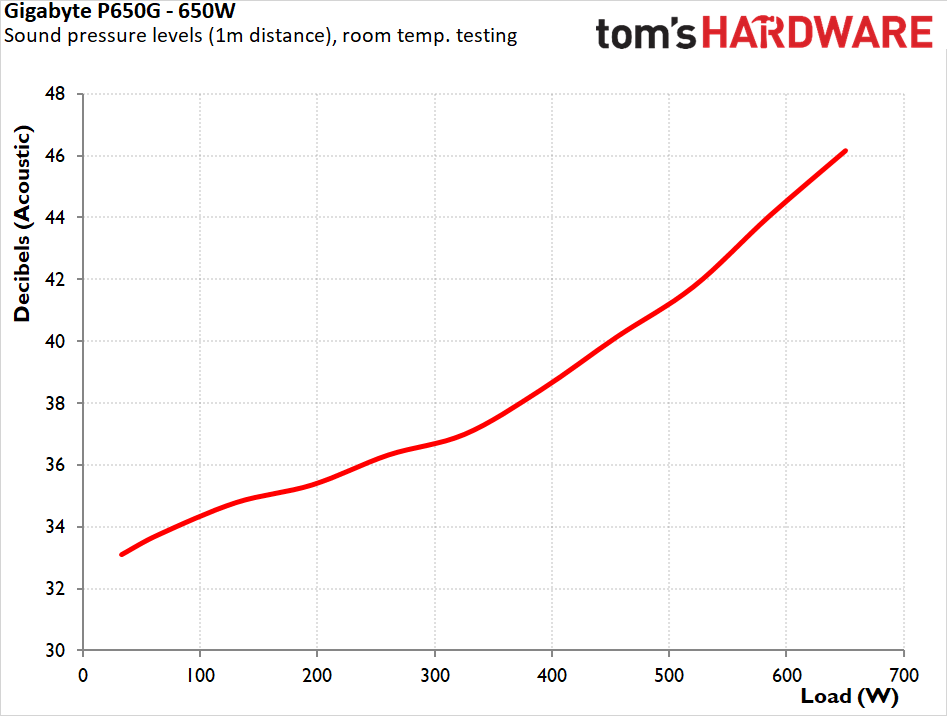
During controlled cold testing conditions, the Gigabyte P650G demonstrated respectable efficiency performance that comfortably meets its 80 Plus Gold certification requirements. At 115 VAC input voltage, the unit achieved an average nominal load efficiency of 88.5%, while 230 VAC input improved performance to 89.8%. These figures place the unit solidly within Gold certification parameters, though they do not approach the higher efficiency levels seen in premium designs.The efficiency curve exhibits typical characteristics, peaking at approximately 50% load where most power supplies achieve their optimal performance. Low load efficiency proves reasonable for a unit in this market segment, suggesting that users running basic systems will benefit from acceptable power conversion characteristics even during idle or light usage scenarios.
The fan maintains low rotational speeds across most of the load spectrum before becoming more audible as the unit approaches heavily loaded conditions. The thermal performance under normal ambient temperatures proves adequate for typical desktop computer environments, with internal temperatures remaining within reasonable limits during sustained operation.
Hot Test Results
Hot Test Results (~45°C Ambient)
Elevated ambient temperatures reveal the P650G's thermal limitations and budget-oriented component selection. Under hot testing conditions, average nominal load efficiency drops to 86.4% at 115 VAC and 87.8% at 230 VAC, representing significant performance degradation that suggests thermal stress within the design.
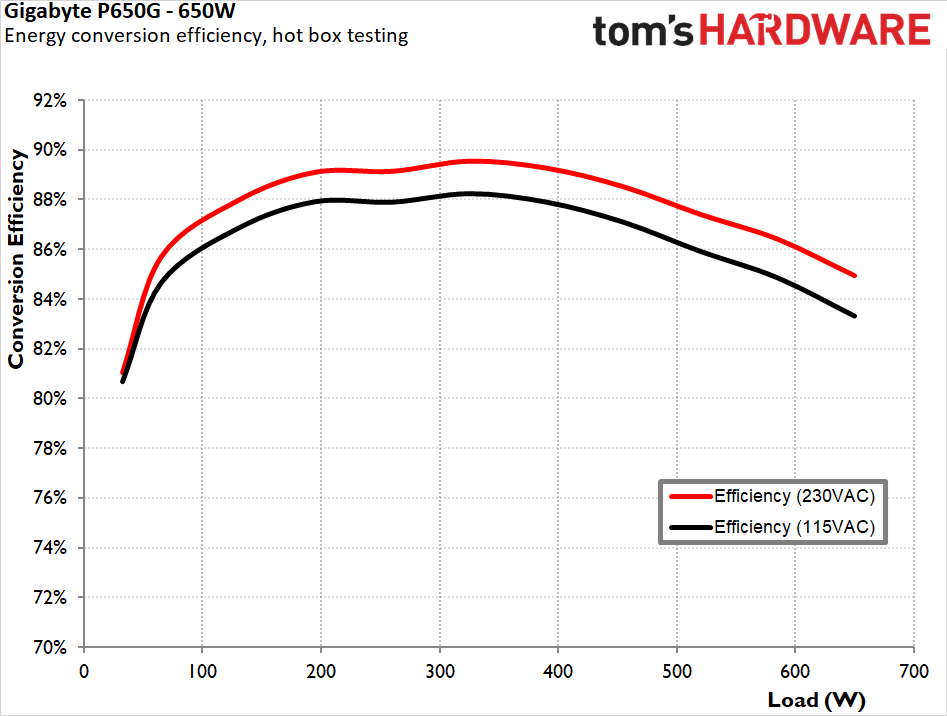
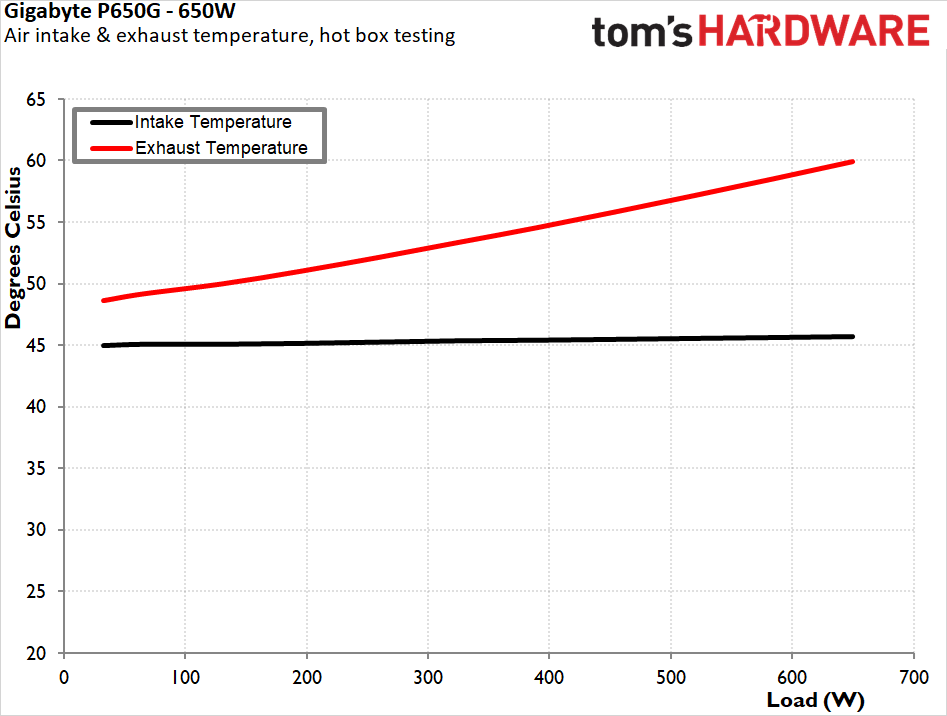
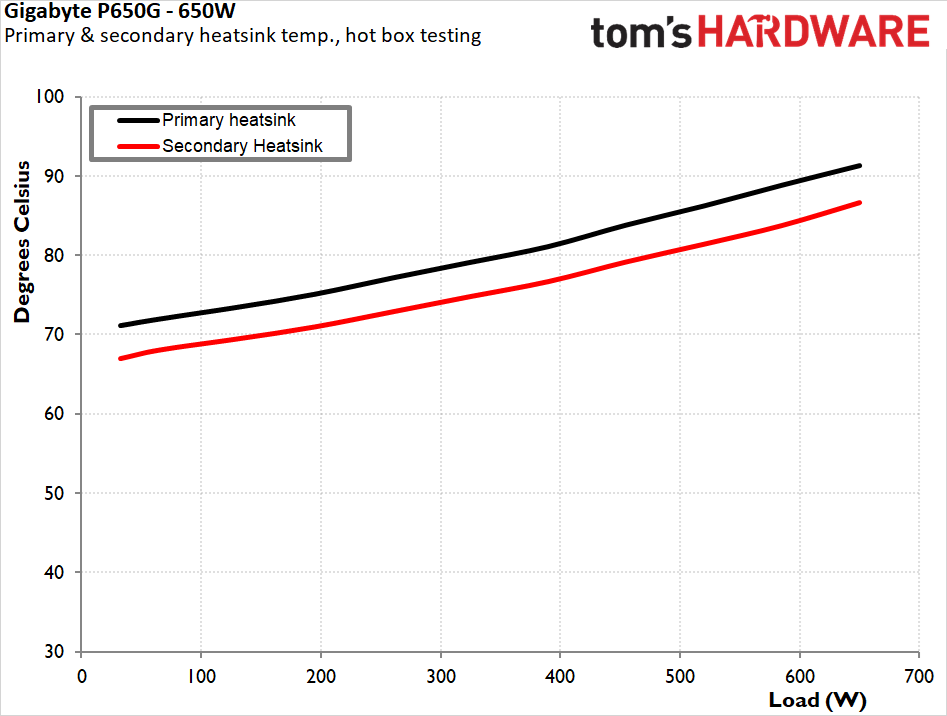
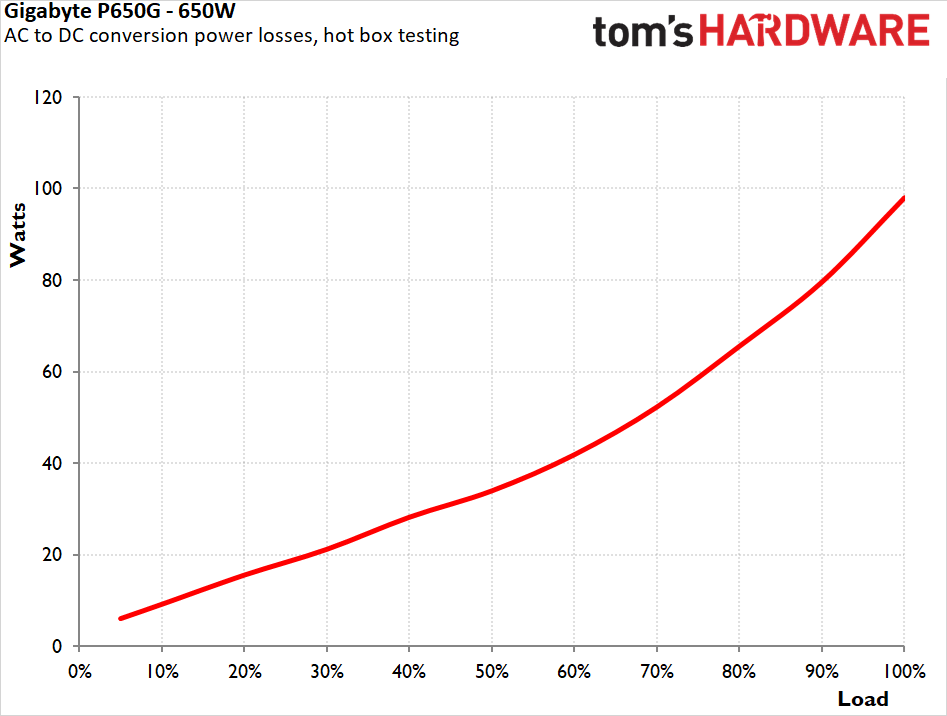
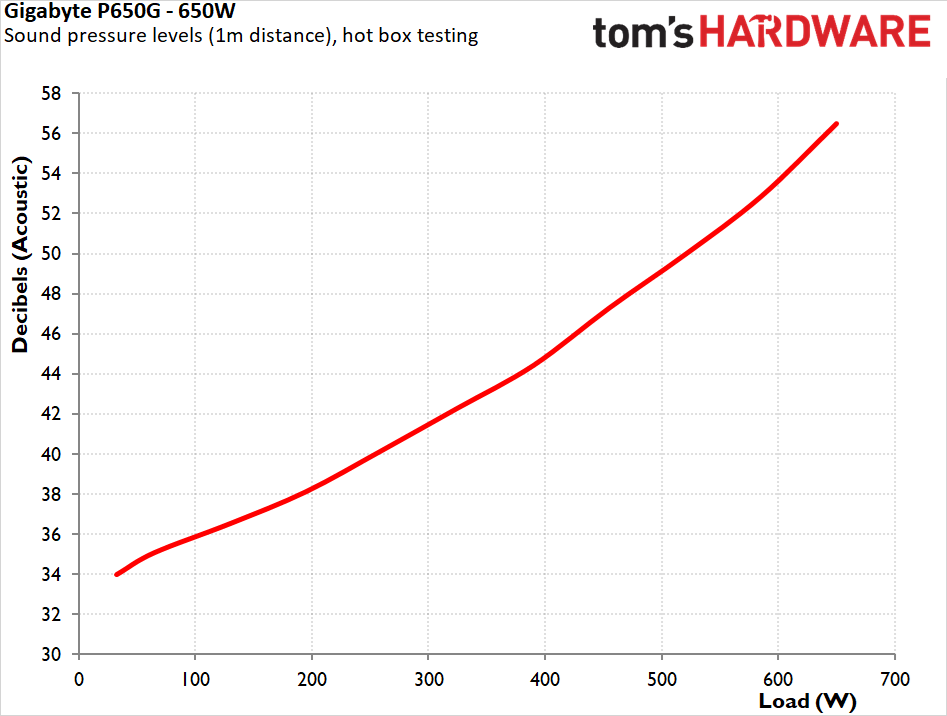
The fan responds much more aggressively under elevated ambient conditions, ramping up speed earlier in the load curve and reaching near-maximum RPM during sustained high-load operation. While the unit of course remains fully functional, it becomes notably audible under these conditions. The unit successfully maintains operation throughout hot testing, though the performance degradation suggests that users in warm climates or poorly ventilated cases may experience increased noise levels during demanding applications.
PSU Quality and Bottom Line
Power Supply Quality
The Gigabyte P650G delivers commendable electrical performance that exceeds expectations for its market positioning. Voltage ripple filtering proves quite good for a unit in this price category, with maximum ripple levels of 48 mV on the 12V rail, 30 mV on the 5V rail, and 30 mV on the 3.3V rail. These measurements fall well within acceptable industry standards and indicate effective filtering design implementation despite the budget component selection.
Voltage regulation across all rails is competent. The primary 12V rail maintains a fair 1.4% regulation, while the secondary 5V and 3.3V rails achieve 2.1% and 2.0% regulation respectively. While not on par with higher-tier units, these are good figures.
During our thorough assessment, we evaluate the essential protection features of every power supply unit we review, including Over Current Protection (OCP), Over Voltage Protection (OVP), Over Power Protection (OPP), and Short Circuit Protection (SCP). All protection mechanisms were activated and functioned correctly during testing.
Protection features function correctly during comprehensive testing, with Over Current Protection (OCP) triggering at appropriate thresholds: 152% for the 3.3V rail, 148% for the 5V rail, and 122% for the 12V rail. The Over Power Protection (OPP) activates at 128% under hot conditions. While these protection mechanisms operate correctly, the OCP settings on the minor voltage rails are suspiciously relaxed.
Load (Watts) | 131.24 W | 326.32 W | Header Cell - Column 4 | 485.71 W | Header Cell - Column 6 | 646.33 W | Header Cell - Column 8 | |
|---|---|---|---|---|---|---|---|---|
Load (Percent) | 20.19% | Row 0 - Cell 2 | 50.2% | Row 0 - Cell 4 | 74.72% | Row 0 - Cell 6 | 99.44% | Row 0 - Cell 8 |
| Row 1 - Cell 0 | Amperes | Volts | Amperes | Volts | Amperes | Volts | Amperes | Volts |
3.3 V | 1.64 | 3.36 | 409 | 3.35 | 6.13 | 3.3 | 8.18 | 3.29 |
5 V | 1.36 | 5.08 | 3.41 | 5.03 | 5.11 | 5.01 | 6.82 | 4.97 |
12 V | 9.82 | 12.1 | 24.54 | 12.04 | 36.81 | 11.95 | 49.08 | 11.93 |
Line | Regulation (20% to 100% load) | Voltage Ripple (mV) | Header Cell - Column 3 | Header Cell - Column 4 | Header Cell - Column 5 | Header Cell - Column 6 | Header Cell - Column 7 |
|---|---|---|---|---|---|---|---|
| Row 0 - Cell 0 | Row 0 - Cell 1 | 20% Load | 50% Load | 75% Load | 100% Load | CL1 12V | CL2 3.3V + 5V |
3.3V | 2% | 18 | 16 | 22 | 30 | 20 | 28 |
5V | 2.1% | 18 | 14 | 24 | 30 | 20 | 28 |
12V | 1.4% | 16 | 20 | 32 | 48 | 46 | 22 |
Bottom Line
The Gigabyte P650G 650W occupies a challenging position in today's competitive power supply landscape, delivering fundamental reliability while making necessary compromises to achieve its aggressive price point. The unit succeeds in its primary mission of providing stable, efficient power delivery with 80 Plus Gold certification, but reveals its budget-oriented nature through component selection, thermal performance, and feature limitations.
MEIC's platform engineering proves competent if unremarkable, delivering electrical performance that meets industry standards while avoiding the more concerning issues that have plagued some budget power supply designs. The electrical performance may not be impressive but is better than we initially projected, suggesting that the fundamental electrical engineering has been executed properly despite cost constraints. Thermal performance under elevated ambient conditions reveals the budget component selection's impact, with efficiency degradation and increased noise levels indicating thermal stress within the design.
The decision to implement a completely non-modular design in 2025 represents a significant compromise, as modular connectivity has become virtually standard even in budget segments. While this approach theoretically could enable cost savings that could be passed to consumers or invested in better components, the P650G's retail pricing does not clearly demonstrate this advantage compared to modular alternatives. Still, it is the absence of a 12V-2x6 connector that represents a more serious limitation, immediately restricting compatibility with modern graphics cards that require PCIe 5.0 power delivery. This design choice suggests the platform's origins predate current connectivity standards and may limit the unit's useful lifespan as graphics card requirements continue evolving.
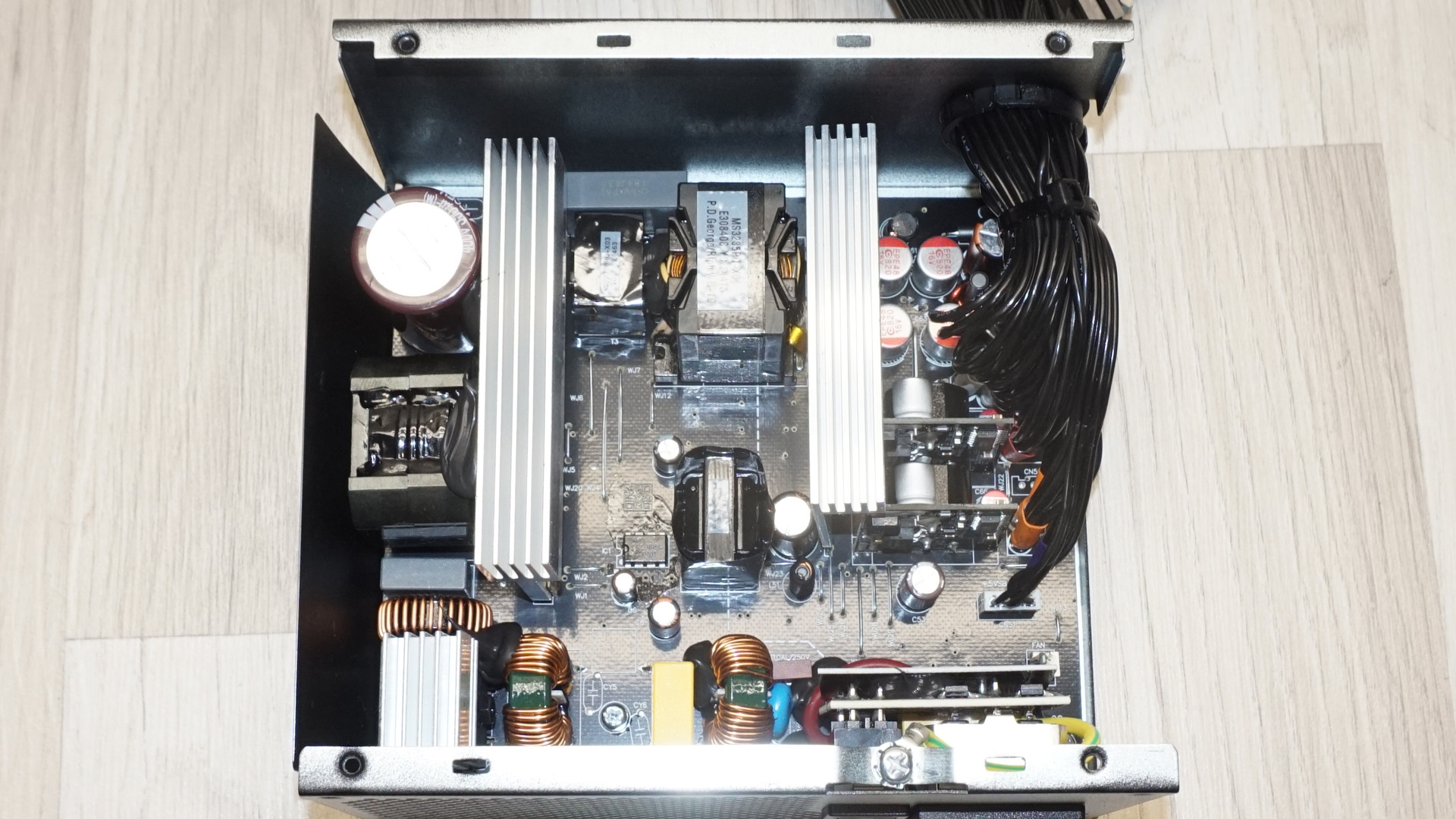
The P650G delivers on its basic promises while revealing the inevitable compromises inherent in aggressive pricing strategies. The five-year warranty provides reasonable peace of mind, though it falls short of the longer warranty periods offered by premium alternatives. However, at its current $100 retail price point, the P650G faces formidable competition from more established designs offering better feature sets, superior component quality, wider connectivity, and enhanced thermal performance.
For budget-conscious builders assembling mainstream gaming systems with current-generation graphics cards that do not require PCIe 5.0 power connectors, the P650G may provide adequate service if found on a sale. However, enthusiasts, overclockers, or users planning to utilize high-end graphics cards would benefit from considering alternatives that offer better thermal performance, modern connectivity standards, and superior long-term reliability prospects.
MORE: Best Power Supplies
MORE: How We Test Power Supplies
MORE: All Power Supply Content

Dr. E. Fylladitakis has been passionate about PCs since the 8088 era, beginning his PC gaming journey with classics like Metal Mutant and Battle Chess. Not long after, he built his first PC, a 486, and has been an enthusiast ever since. In the early 2000’s, he delved deeply into overclocking Duron and Pentium 4 processors, liquid cooling, and phase-change cooling technologies. While he has an extensive and broad engineering education, Dr. Fylladitakis specializes in electrical and energy engineering, with numerous articles published in scientific journals, some contributing to novel cooling technologies and power electronics. He has been a hardware reviewer at AnandTech for nearly a decade. Outside of his professional pursuits, he enjoys immersing himself in a good philosophy book and unwinding through PC games.
